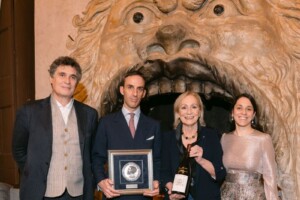Where do the yeasts responsible for fermentation of wine, beer and bread “spend” the winter and spring, when they are not "at work"? Up until now the "life" of these yeasts was wrapped in an enigma, and the mystery has now been unraveled due to the studies of a group of three researchers from the Mach Foundation, Duccio Cavalieri, Carlotta De Filippo and Roberto Viola, in collaboration with the Department of Animal Biology and Genetics, and Pharmacology of the University of Florence (Irene Stefanini, Leonardo Dapporto, Stefano Turillazzi, Mario Polsinelli, Antonio Calabretta, Monica Di Paola and Paolo Capretti) and the CNRS-Centre national de la recherche scientifique of Montpellier, the largest French public research center, thanks to a study published in the prestigious U.S. journal “PNAS - Proceedings of the Academy of Natural Sciences”. The study revealed that in the winter and spring months when they are not involved in the fermentation, these yeasts "live" in the intestines of social wasps and hornets that therefore become the protagonists of the typical characteristics of beer, wine and bread, along with other important factors such as climate, variety and, of course, man (info: www.iasma.it).
For the first time, therefore, the ecological cycle of the yeasts responsible for fermentation of wine, beer and bread has been determined. Up to now, in fact, the life cycle of these yeasts was known only during the production phase and fermentation of these products. Up until today it was unknown where these microorganisms lived when there were no fermentations, i.e., in the winter and spring months. This research shows that these yeasts "live" in the intestines of hornets and social wasps. These insects are therefore their most important vehicles. "It's amazing”, says Duccio Cavalieri, coordinator of the Department of Computational Biology and among the researchers who participated in study, “how “microbiota”, that is, the set of fungal species of hornets in the month of September includes the same species located on the surface of the grapes at the beginning of grape fermentation. These yeasts "spend" a period of their life cycle within the intestines of social wasps and hornets, outside of fermentation. Then”, continued Cavalieri, “when the fruits ripen, these insects are attracted by their smell, break them thanks to their powerful jaw apparatus and inject these micro-organisms into them”. This study is linked to research started in 1998 and in fact, closes the ecological cycle of the yeast, which had still been shrouded in mystery. To arrive at this result the genomes of these yeasts carried by hornets were sequenced and it was possible to identify strains of yeasts in periods of the year in which they had never been isolated, from December to February.
Comparing the genomic level of the strains of hornets with other strains isolated from grapes and fermentation of the natural areas of isolation of insects, to a collection of 400 strains isolated from natural and industrial environments in France, the United States, Chile, New Zealand and Japan, researchers have shown that the strains isolated from social wasps, hornets, grapes and wines of a specific distribution area were better correlated than areal strains of different microbial biodiversity by identifying a characteristic of a vineyard or region.
“Today”, said Cavalieri, “the use of genomics and bioinformatics permits identifying a yeast or a microorganism isolated from a natural environment and comparing it with other microorganisms in other parts of the world” simply “by comparing the sequence of marker genes, just like a man does for a paternity test”.
It appears, therefore, that these insects are the protagonists of the products. The hornet brings certain areal features and this ensures the maintenance of an essential richness, or biodiversity of microorganisms that are critical to the typical products of fermentation such as wine and beer.
”This discovery”, concluded Roberto Viola, Director of Research and Innovation Centre of the Edmund Mach Foundation of San Michele, “opens the way for other studies that want to understand how this microcosm of micro-organisms may be associated with typical products, and how it is important to know, protect, preserve and make it available to human activities”.
Copyright © 2000/2025
Contatti: info@winenews.it
Seguici anche su Twitter: @WineNewsIt
Seguici anche su Facebook: @winenewsit
Questo articolo è tratto dall'archivio di WineNews - Tutti i diritti riservati - Copyright © 2000/2025








































































































































































































